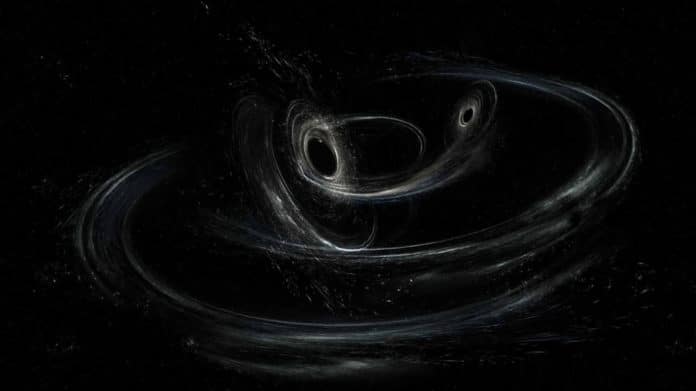Binary black hole spin measurements from gravitational wave observations reveal the binary’s evolutionary history. More specifically, these measurements can be used to identify binaries caught in the so-called spin-orbit resonances.
Einstein’s theory of general relativity first predicted the resonances. Later, the first ‘hints’ were found in gravitational wave data from LIGO and Virgo.
In a new study, scientists at Cornell uncovered the first potential signs of spin-orbit resonances in binary black holes. For this study, they used gravitation wave data.
Scientists report that the two black holes’ spins tend to be anti-parallel to each other when projected onto the orbital plane. This can be a sign of spin-orbit resonances.
Saul Teukolsky, the Hans A. Bethe Professor of Physics (A&S), said, “Resonance effects are ubiquitous in physical systems. They occur when two processes in a system occur at especially related frequencies. In the black hole systems, the resonance is predicted to occur between the spin motion of the black holes and their orbital motion and leaves an imprint on the gravitational waves produced. This work shows that if we analyze the data cleverly, we are much closer to testing this prediction of General Relativity than we thought we were.”
Astrophysicist Vijay Varma, a former Klarman Postdoctoral Fellow in the College of Arts & Sciences (A&S) said, “Black holes typically rotate (spin) because they form from dying stars that spin themselves. When two such black holes orbit each other in a binary, their spins interact with the orbit.”
“Binary black holes lose energy to gravitational waves, causing the black holes to move toward each other and eventually merge. Some binary black hole spins are aligned along or opposite the orbital angular momentum, leading to a “bland” merger on a fixed plane. But other binary black holes have spins tilted with respect to the orbital angular momentum, setting off an intricate interaction called precession.”
“When the spins are tilted with respect to the orbital angular momentum, the orbit precesses like a top that is spinning along a tilted axis.”
“Spin-orbit resonances can occur in precessing binaries, but this depends on the nature of the supernova mechanism that produces the black holes from their stellar progenitors. If the supernova emission is not symmetric in all directions, the black hole gets a recoil velocity at birth, which is similar to the recoil of a fired gun.”
“If the supernova recoils are large enough, the binary can end up in a spin-orbit resonance. These are special configurations where the spins directions in the orbital plane are either parallel or anti-parallel.”
It was thought that LIGO and Virgo gravitational wave indicators were not adequately sensitive enough to get proof of spin-orbit resonances. Notwithstanding, Varma and teammates applied two data gathering hacks to distinguish these first clues.
They used computer modeling based on simulations of black holes. These models accurately capture the effect of the spins from numerical simulations and allow scientists to obtain enough information from gravitational-wave observations.
Later, they measured the spins just before the black holes merged.
Varma said, “We are starting to probe the spin-orbit resonances, which we originally thought was impossible until next-generation detectors arrive in the 2030s. Our hope is that by studying these spin-orbit resonances, we can learn more about the mechanism of the supernova, which has remained an enduring mystery.”
Journal References:
- Vijay Varma, Sylvia Biscoveanu et al. Hints of Spin-Orbit Resonances in the Binary Black Hole Population. DOI: 10.1103/PhysRevLett.128.031101
- Vijay Varma, Maximiliano Isi et al. Measuring binary black hole orbital-plane spin orientations. DOI: 10.1103/PhysRevD.105.024045
